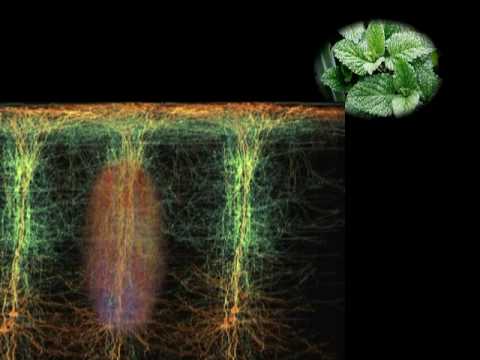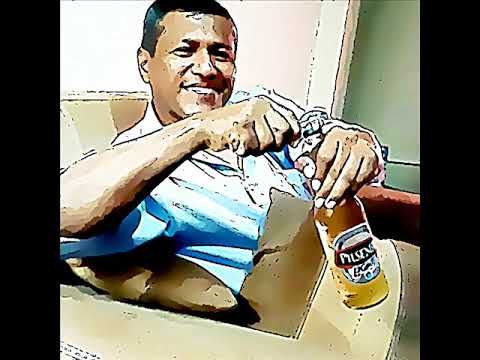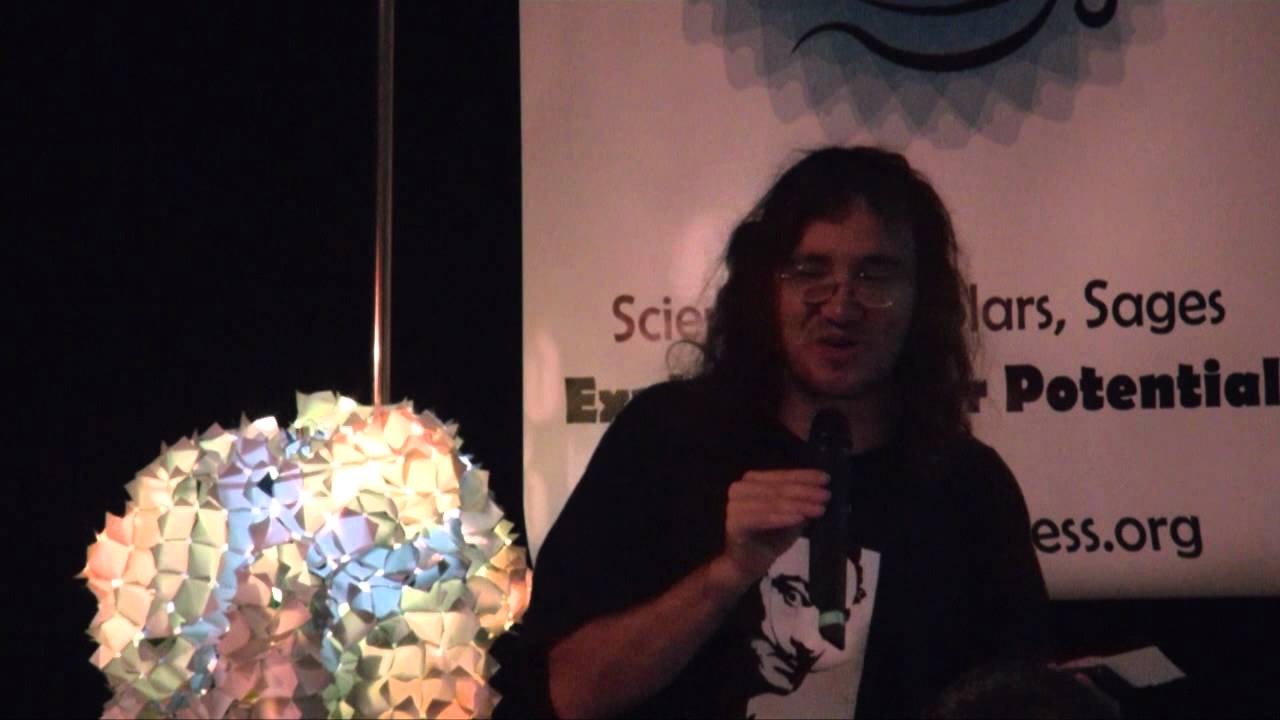jeffkosmo
A response to a video by Conferencereports titled, “The Hard Problem of Consciousness”.
In this video, I try to address Fred’s frustration about the difficulty of talking about consciousness, by formulating a simple definition of it.
I also provide my theory of how the brain produces consciousness, sans any reliance on “quantum voodoo”, and instead relying on the electromagnetic paradigm.
www.jeffkosmoski.com
Source




Hi Jeff,
I really like your videos about consciousness. Let me throw out a suggestion that might open a window into possible interactions of biological entities with quantum fields. Although, I think you're model for basic consciousness is likely correct and that one does not "need" to invoke quantum voodoo to "explain" consciousness. Nevertheless, that does not exclude interactions of biological "being" phenomena with esoteric physical states.
If you Google "Calabi Yau" and look on the "images" link below
https://www.google.com/search?q=calabi+yau&tbm=isch&tbo=u&source=univ&sa=X&ei=Sb1GU7iqF6yA2QWAp4FA&sqi=2&ved=0CEsQsAQ&biw=1280&bih=598
You'll find many 3-d sections of the 6 dimensional Calabi-Yau spaces, and you can easily see that many have a high "genus" which is the topological invariant that counts how many "holes" are in a surface (e.g.,the genus of a donut, or a coffee cup is 1). Many biological structures also have a high genus, e.g., liver, brain, blood capillaries. This means that there are local maps (in the mathematical sense) from sections of Calabi-Yau manifolds to many biological structures.
Of course, Calabi-Yau manifolds are of particular interest has they provide a consistent mathematical framework for the "extra 6 dimensions" of space-time which arise in models of String Theory. These dimensions are often thought to be "compactified" and very small so that we cannot "see" them. Alternatively, they may be extended but simply unavailable to most of the matter-energy that we do "see". In any case, the existent of a local map from a high genus Calabi-Yau space to biological structures, means that "mathematically" there an interaction is possible between energy and matter that may exist in the Calabi-Yau space and high genus biological phenomena.
Now one thing, we know about "life" is that if something "can" happen eventually it very likely "does" happen. Indeed, it would very unlike life to keep the energy that may lie in the extra dimensions separate from our space-time forever.
Thus, while this "topological interaction" is not needed to explain consciousness, such interactions may well be accessible to consciousness, and may provide a "physical" basis for certain esoteric experiences, such as might occur in altered states, such a meditation.
Keep up the great work–your videos are very engaging–steve kosciuk (skosciuk@wisc.edu)
Regarding the isolation tank/ mint leaf example. If felt experience comes down to electromagnetic activity created by firing neurons, than couldn't one's quali of smelling mint be altered by introducing a magnetic field around the brain at the same time? (correct me if I misunderstood)
Btw, I'm not an expert on TMS but my understanding is that its sessions of targeted EM designed to stimulate neural activity in parts of the brain which are believed to be under active in depression patients…
@TheJohnVandivier
(3) cont'd – I think it's more accurate to say that we "rationalize", whatever has been deemed most optimal by the Top Level Optimizer.
Cheers,
Jeff
@TheJohnVandivier
(2)…cont'd – is a module I refer to as "the likener". It's kind of an "analogy engine" or metaphor machine. When we're curiously inspecting some new person, place or thing, we really don't ask "What is this?" Instead, we ask, "What is this like?". I.e., what else in my memory banks does this object resemble, and in what ways. And how is it different.
I also agree with your skepticism about the term "rational". cont'd @ (3)
@TheJohnVandivier
(1)
Thanks for the comments!
I actually touch on this notion in my book (Evolving Towards the Truth). I refer to the self as being more like a community, than a monolithic, singular entity. Among these contributors is a group of "desire modules" (sex, eat, socialize, fear, etc.). But on top of all of these sits a "Top Level Optimizer"; it's responsibility is to optimize pleasure and minimize pain, in the long run. In addition to this intellectual module (cont'd @ 2)
I guess I will put these here. Consider both of these responses.
watch?v=btQBJ8LdoSg
watch?v=AgQgfb-HkQk
so quantum physics is voodoo?
I like this debate, very high level, but both guys seem respectful of each other. Kind of nice.
@isabel2a
I haven't heard of NMRs having any effect; however, there's a therapy known as Transcranial Magnetic Stimulation that is apparently used for depression and chronic pain.
I don't know a lot about how NMRs actually work, but it may be that the frequencies at which they work are so high that they don't affect the brain – for the same reason that radio frequencies don't either.
Regarding electromagnetism: wouldn't NMR devices seriously disturb brain function?
I did some homework and I am ready to report back to you on my findings.
1) Notice noone here is talking about functional brain areas, neurons, or dendrites.
2) The Hard Problem is therefore, a philosophical issue, not a problem arising from peculiarities of neuroscience.
The Hard Problem: Even given a complete wiring diagram of the brain, can we logically deduce that internal experience is happening? Many say no. It is a question of reality given 1st-person versus 3rd-person views.
@prhughes0
Re 2nd: Please see my video "Machine Consciousness – What's Required".
I'm looking forward to hearing your comments.
@prhughes0
Re quantum voodoo: I believe that the reason people invoke it is precisely because nobody understands it.
Re computation: To me, it still seems like a bad choice of words. It implies mathematical calculations, and unnecessarily biases the discussion.
If the biochemical / molecular processes inside neurons are "computational", then I suppose my muscle cells compute, and photosynthesis is computational as well.
Cont'd below…
@prhughes0
I invoke E M because it is appealingly "non-physical". It is much "closer in kind" to the ethereal, intangible, invisible nature of qualia.
Regarding the "computational aspects of neural activity": as I say in the video, it's not at all clear to me what people mean when they infer that neurons are doing some type of "computation".
Regarding your 2nd question about "why is this not conscious"?, kindly advise, where did I say it wasn't?
Thanks…
Thanks. I was aware of that when I went Googling it.
It seems when you look at history of ideas that the prevailing culture picks the state of the art ideas or technology to define reality for itself.
zezt — Read up on the Chinese Room for why the strong AI model or computationalism is incorrect.
I don't think the category of qualia is useful. If as Drastam says it is understood to be first person experience then we should just say that and not introduce another level of abstraction. We don't need to and it only complicates things.
For understanding what the self might be I would go to psychoanalysis for whatever their conception of it is. If I understand them right then the self is a fiction that we tell ourselves.
@otonanoC
I agree. I claimed I was only explaining a single quale; but I also say that "general consciousness", where for instance, you're just observing things, is basically a parade of invidual qualia.
However, I address memory and awareness in another video of mine,
"A Theory of Consciousness – Vid 3, as well as in "The Architecture of the Evolved Self."
Your theory is only a description of immediate perception in cortical columns. This does not explain how we can remember how we felt a week later and then furthermore, report on this feeling in language. (Our brains can remember how we felt when a close friend died 15 years ago. How does that square with your theory?) Cortical column activity is still seen in people who are unconscious.
@1noen1
Regarding my thoughts about the self, I go into better detail in Video 4 of my "Dualism" series.
Basically, I fully agree there IS a self; but it's this pluralistic, non-centralized communty of modules and motivators. Not a singularity, but a plurality.
Regarding your comment on q"ualia"; what do you mean by
" I'm not convinced of the reality of "qualia".
Thanks…
polarity. known/unknown finite/finite
whats the oppo-site of Mystery? 😉
I agree with you though about computationalism. I was recently told that the paradigm we are in is based on that. I said I didn't agree with it. we are NOT machines/computers. But i searched the term at YT and not one fukin vid about it LOL
Ie., does the fish notice the water its swimmin in etc?
You are close. You should read some John Searle. Like him, I'm not convinced of the reality of "qualia". I also think there is a self, though not a metaphysical or spiritual one.